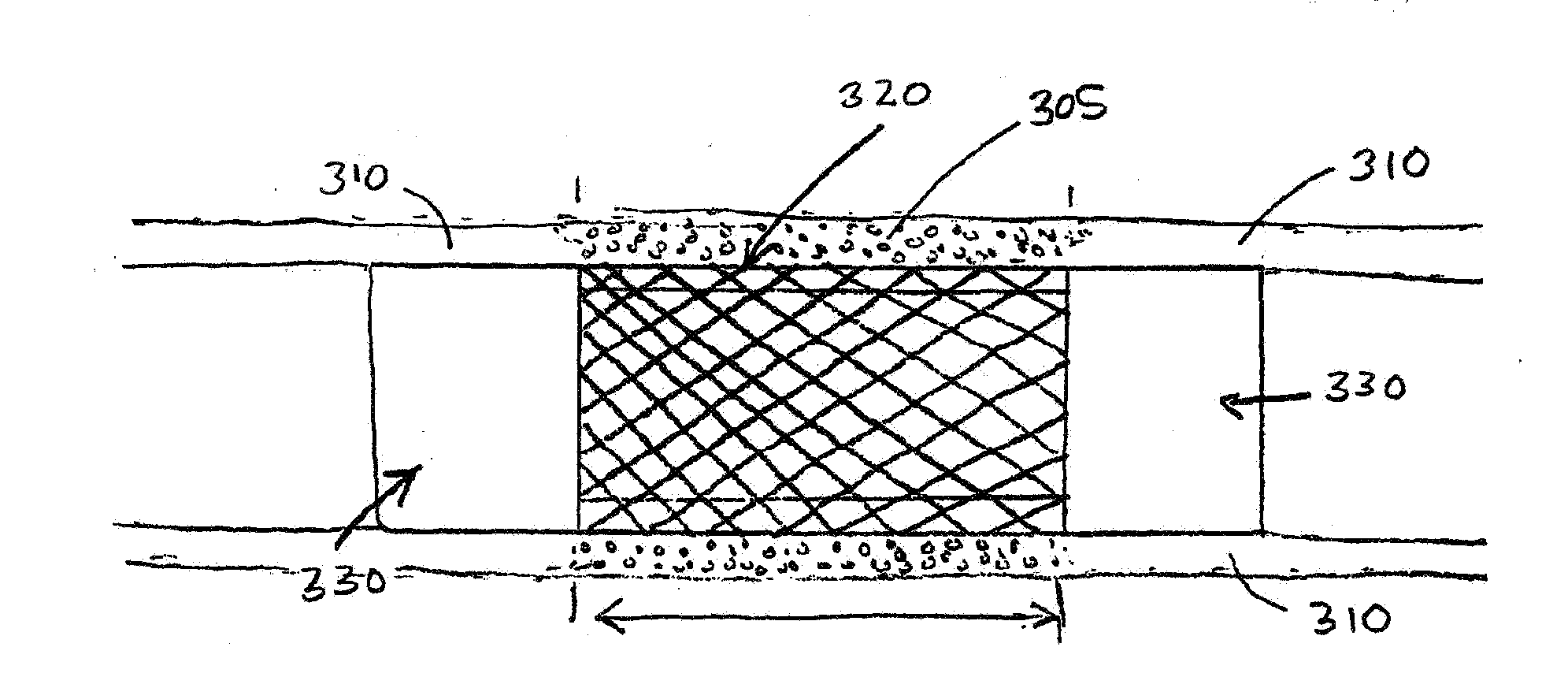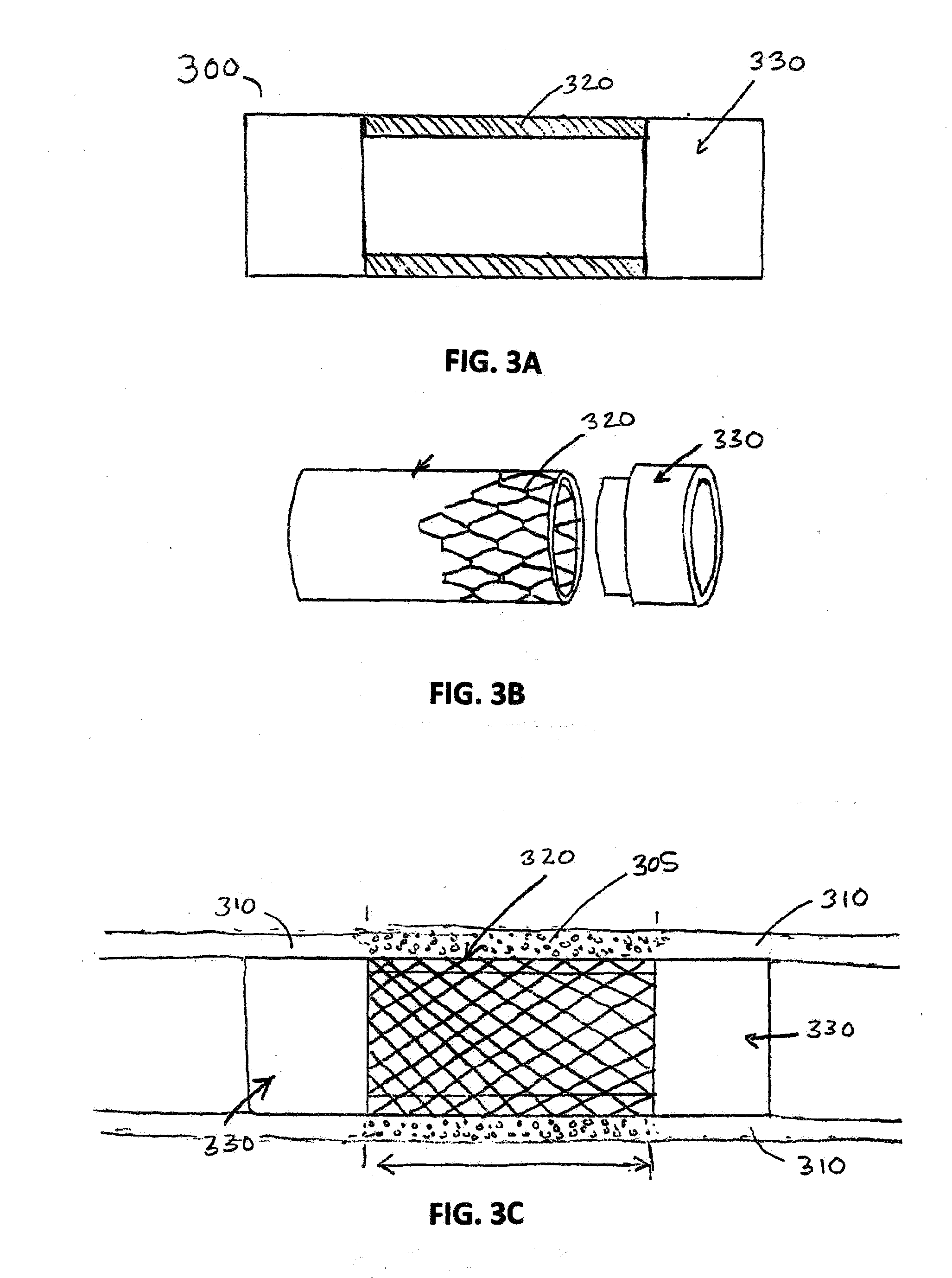Biologically engineered stent
- Summary
- Abstract
- Description
- Claims
- Application Information
AI Technical Summary
Benefits of technology
Problems solved by technology
Method used
Image
Examples
Embodiment Construction
[0033]The present invention provides novel drug-eluting stents (DES), designed for improved performance over existing stents. In various embodiments the improved stents feature one or more drugs for reducing restenosis and thrombosis, and for encouraging the development of a layer of endothelium over the stent after placement in a subject's blood vessel.
[0034]As discussed above, coronary artery re-occlusion in humans still remains a drawback of percutaneous coronary interventions, even in the era of drug-eluding stents (DES). The working principle of a DES involves the delivery of controlled amounts of anti-proliferative agents at the local level, with the aim of suppressing neontimal proliferation, the main cause of lumen re-narrowing after a stent has been implanted. At present, several DES platforms have been developed and evaluated for clinical use. With regard to stent type, the differences between them include: (1) metal used to fabricate the stent; (2) anti-proliferative drug...
PUM
| Property | Measurement | Unit |
|---|---|---|
| Bioabsorbable | aaaaa | aaaaa |
Abstract
Description
Claims
Application Information
 Login to View More
Login to View More - R&D
- Intellectual Property
- Life Sciences
- Materials
- Tech Scout
- Unparalleled Data Quality
- Higher Quality Content
- 60% Fewer Hallucinations
Browse by: Latest US Patents, China's latest patents, Technical Efficacy Thesaurus, Application Domain, Technology Topic, Popular Technical Reports.
© 2025 PatSnap. All rights reserved.Legal|Privacy policy|Modern Slavery Act Transparency Statement|Sitemap|About US| Contact US: help@patsnap.com



